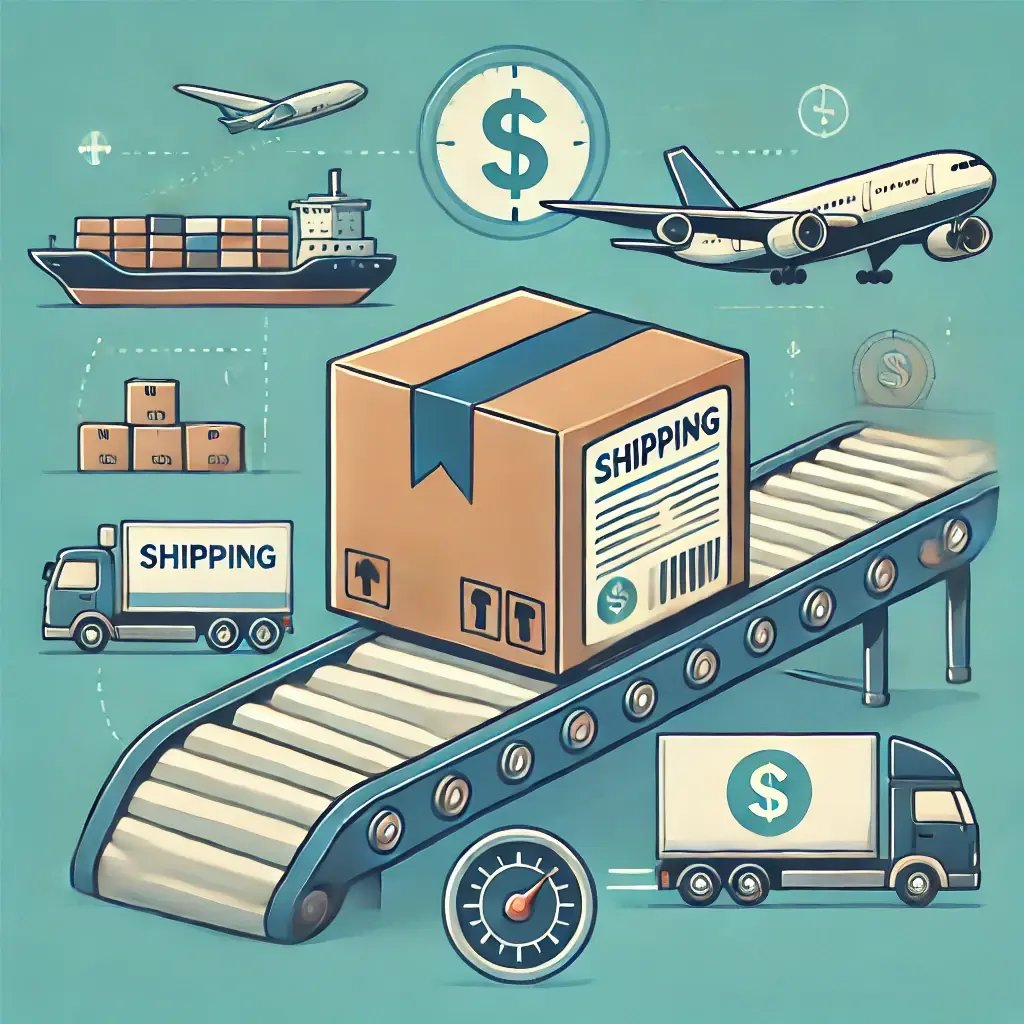How Direct-to-Consumer (D2C) Fulfillment Can Take Your Brand to the Next Level
Switching to direct-to-consumer (D2C) fulfillment is a powerful move for growing e-commerce brands. It’s all about connecting directly with your customers and creating a streamlined, efficient operation—with the right third-party logistics (3PL) partner by your side. Here’s how D2C, backed by a great 3PL relationship, can elevate your business:

The Hidden Cost of an Amazon (or Single-Channel) Dependency
Relying on a single sales channel poses several challenges and risks for sellers such as:
1. Increased Dependence on Platform Policies & Fees
- Amazon frequently increases seller fees, making it less profitable to sell exclusively on the platform.
- Sellers have no control over sudden policy changes, which can impact their margins overnight.
- Example: Temu vs. Amazon pricing shows that sellers often make more money selling at a lower price on Temu than at a higher price on Amazon due to excessive fees.
2. Inventory & Fulfillment Disruptions
- Amazon FBA & AWD have intake delays that can cause stockouts, leading to missed sales opportunities.
- Relying on one fulfillment provider can result in:
- Shipping delays
- Higher costs during peak seasons
- Inconsistent inventory placement
- Example: Sellers using Amazon-only fulfillment see major spikes in fulfillment costs when scaling up multi-channel.
3. Lack of Customer Ownership & Retention
- On platforms like Amazon, sellers do not own customer data (emails, demographics, preferences).
- This makes remarketing & repeat purchases difficult, forcing sellers to pay for customer acquisition repeatedly instead of building loyalty.
- Example: D2C brands leveraging Shopify can run email campaigns, offer loyalty programs, and upsell products—strategies unavailable on Amazon.
4. Vulnerability to Algorithm & Search Ranking Changes
- Amazon and other platforms control product visibility through their ranking algorithms.
- Changes to SEO ranking rules or sponsored ad costs can make a previously profitable product disappear from search results overnight.
- Example: A seller on the West Coast realized their products didn’t appear in search results the same way nationwide, impacting sales.
5. Account Suspension or Listing Removal Risks
- Sellers face sudden account suspensions or listing removals due to policy violations or competitor attacks.
- Amazon frequently updates compliance requirements, and failing to meet them can lead to temporary or permanent bans.
- Example: A seller was making millions annually but had their products pulled due to new Amazon regulations, causing business shutdown overnight.
6. Limited Pricing & Profitability Control
- Amazon dictates pricing rules, limiting flexibility in discounts, promotions, and premium pricing strategies.
- Sellers often lower prices to stay competitive, but Amazon still takes a large cut in fees, reducing profitability.
- Example: Sellers who expanded to multi-channel (Shopify, Walmart, TikTok) saw higher margins due to lower fulfillment & platform costs.
7. Market Competition & Copycat Sellers
- Amazon often prioritizes its own private-label brands over third-party sellers.
- Competitors can copy product listings, undercut pricing, or hijack product rankings using aggressive tactics.
- Example: Brands that diversify into Shopify + TikTok prevent competitors from controlling their customer acquisition channels.
8. Geographic Limitations & Regional Bias
- Amazon & other marketplaces may not distribute products evenly across regions.
- Example: A seller assumed their product was visible nationwide, but Amazon’s warehouse allocation limited exposure to certain regions (e.g., not appearing in search results on the West Coast).
9. Growth Limitations & Scalability Challenges
- Scaling solely on Amazon or Shopify can be inefficient & costly, as sellers outgrow the platform’s capabilities.
-
Example: Brands with 400K+ orders per year found that using multiple fulfillment networks reduced costs and improved delivery speeds.
10. High Cost of Customer Acquisition
-
Without D2C capabilities, sellers rely solely on paid ads to generate sales.
- Amazon Ads & PPC costs have skyrocketed, making profitability harder to maintain.
- D2C brands leverage SEO, organic content, and email marketing to reduce dependency on paid ads.
Get to Know Your Customers
D2C fulfillment gives you direct access to your customers’ data and preferences. Instead of relying on retailers, you’ll get real-time insights to make smarter product and marketing decisions.


Control the Brand Experience
With the right 3PL partner, you’ll have full control over your brand’s look and feel in every package. From packaging to the unboxing experience, your brand will stand out and make a memorable impression.
Keep More of Each Sale
Going D2C means cutting out the middleman, so you can hold onto a bigger slice of each sale. A good 3PL partner will also help you save on fulfillment costs, boosting your profit margins even more.

.jpg?width=1024&height=768&name=image%20(8).jpg)
Stay Flexible and Fast
D2C fulfillment makes it easier to launch new products, test ideas, and adapt. And a reliable 3PL partner will handle the logistics so you can respond quickly to customer demand and market trends.
Build Loyalty
D2C is about building strong, direct relationships with your customers. A 3PL partner can help you deliver exceptional service - think fast shipping, easy returns - which keeps customers happy and coming back.


Simplify Inventory
A strong 3PL partner will make tracking and managing inventory simple. They’ll help you keep stock levels just right, so you’re never overstocked or out of stock.
Offer Affordable Shipping
Many 3PLs offer discounted shipping rates, which lets you provide fast, affordable delivery - sometimes even free! This can be a big draw for customers.

A DTC Blueprint for Brands:
1. Enable Manual Fulfillment (MF)
- Start by integrating a third-party logistics provider (3PL) with SKUPREME to allow for Manual Fulfillment (MF) of Amazon orders.
- This enables sellers to offer both FBA (Fulfilled by Amazon) and FBM (Fulfilled by Merchant) options, ensuring:
- No stockouts due to Amazon's inventory transfer delays.
- A 1-3% revenue boost and improved Best Seller Rank (BSR) by eliminating stock gaps.
- Short-term benefit: Stabilizes Amazon operations, reduces fulfillment risks, and allows sellers to maintain stock even during inventory fluctuations.
2. Launch on Shopify (or Other Sales Channels)
- Establish a Shopify store to create a direct sales channel.
- Use SKUPREME to sync the existing Amazon catalog to Shopify for a one-day setup.
- Benefits:
- Leverage existing Amazon inventory for Shopify sales.
- Reduce fulfillment costs by using a 3PL instead of Amazon's MCF (Multi-Channel Fulfillment).
- Marketing Tactics for Shopify:
-
- Warranty Registration: Encourage customers to register their warranties on Shopify.
- Email Marketing Sequences: Use warranty emails for retargeting campaigns and lookalike audience marketing on platforms like Facebook.
3. Content Strategy & Organic Growth
- Focus on content creation to drive organic traffic and improve SEO rankings.Strategies:
- Create evergreen content such as tutorials and product guides.
- Utilize YouTube instructional videos and link back to the Shopify store.
- Implement User-Generated Content (UGC) for social proof.
- Example: A measuring instruments brand used product tutorial links to drive consistent, long-term traffic.
4. Expand to Multi-Channel Marketplaces
- Once Shopify is operational, expand to other marketplaces like:
- Walmart (1-3% additional revenue potential).
- TikTok Shop (instant sales spikes through viral content).
- Use SKUPREME to link inventory across multiple platforms and route orders to the best fulfillment providers.
- TikTok Strategy:
- Previously, influencers linked to Amazon listings.
- Now, they can link directly to your Shopify store, capturing sales without Amazon fees.
5. Optimize Fulfillment Network and Scale
- Build a multi-warehouse fulfillment network to lower shipping costs and speed up delivery times.
- Place inventory in key fulfillment centers (typically 3 warehouses cover 80% of U.S. customers).
- Benefits:
- Lower shipping costs by keeping products closer to customers.
- Enable automated carrier rate optimization using Scupreme to select the cheapest and fastest shipping option.
- Sellers who move from Amazon-only fulfillment to a diversified network see significant cost savings (e.g., reducing daily fulfillment losses of $600+).
6. Create a D2C Enablement & Marketing Strategy
- Develop a D2C Enablement Funnel, including:
- A PDF roadmap outlining the four key phases of the transition.
- A dedicated webpage with resources, guides, and success stories.
- Implement a targeted outreach campaign:
- Run a cold email sequence to sellers at different D2C stages, educating them on the transition.
- Use LinkedIn & social media content to highlight success stories and benefits.
- Develop case studies to showcase:
- How fulfillment network optimization saved brands up to $10K per month.
- The profitability shift from Amazon-only to a diversified sales model.
- Leverage AI-generated content for:
- Blog posts, email campaigns, and educational materials.
- Automated tools to assist sellers in understanding and implementing D2C strategies.
Ready to Diversify? Future-Proof Your Business with SKUPREME!
Schedule Your Free Demo and See How SKUPREME Can Propel Your DTC Journey.

%20(1)_preview_rev_1.png?width=256&height=179&name=youtube%20(1)%20(1)_preview_rev_1.png)
